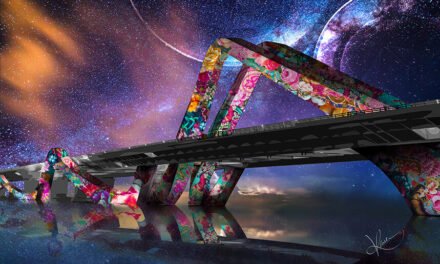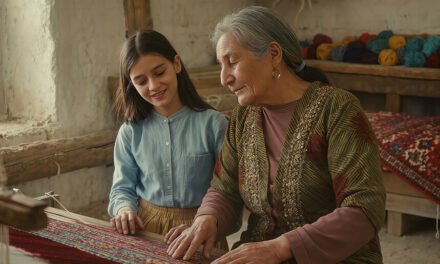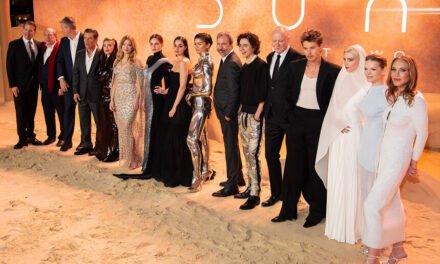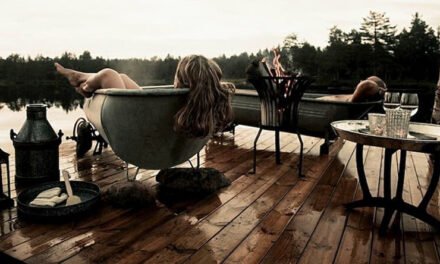
Overlooking the Bosphorus, the Rumeli Fortress was built in an amazingly short time of four months by Sultan Mehmet the Conqueror to cut Byzantine sea traffic during the conquest of Istanbul in 1453.
The cradle of civilization reaches across Asia and Europe welcoming all who enter with its majestic beauty.
There I was in Europe’s Capital of Culture: Istanbul. Sitting astride two continents, I awoke to a crisp October morning, barely 55 degrees, gazing from Istanbul’s heart across the Bosphorus strait to its Asian shores, scarcely a mile away. While all of this glory ahead of me I was daydreaming about another place in Turkey that promised gluttony for my eyes aching from seeing strip malls for hundreds of straight days. My mind was on Cappadocia.
Turkey’s geological phenomena are prominently displayed at the massively eroded plateau of fragile volcanic stone in Cappadocia some 200 miles southeast of Ankara.
There, not far from the market town of Nevshir, wind and water have carved out pyramids, caves, columns and cones. Your imagination takes you from there, drawing a thousand ancient pictures.
The compelling natural beauty is accompanied by the the unique hollowed-out caves of chapels and cells which early communities of hermits and monks carved into the soft rock. As a salute to Byzantine architecture, the chapels are shaped like crosses and have columns, arches, vaults and domes, all sculpted from the rock.
Along the walls of their cells the monks carved tables, benches, cupboards, ovens and sometimes even graves. To reach many of the rooms, they cut deep passageways into the rock, devising hidden ventilation shafts and an intriguing security system where flat rounded stones could be rolled by a single man on the inside, but couldn’t be budged from the outside. Here they waited, hidden, through long silent days of siege, or retreated from passing marauders. It’s easy to see why the visions of Cappadocia carve a permanent place in your memory.
Back to the present, I check my watch, almost willing the room service to my suite at the sprawling Bosphorus Four Seasons. [Don’t let me get too misty about the Four Seasons in the middle of my article, so check out the sidebar piece in another part of the ALO site.] I can taste the foul (fava beans seasoned with garlic, lemon, olive oil and salt), fresh pita, soft cheese, olives, and Turkish coffee. The thought of the rich coffee recalls the strong blends of the brew I had yesterday during my self-guided Istanbul walking tour.
During trips to town, she would scout potential members of the harem. Once inside, the new recruit would be taught how to deal with His Highness and his friends at parties. The opulent palace with Italian marble floors, mosaic walls and plush gold-spun carpets was home to events envied the world over. Once she worked up the harem’s hierarchy, she might be chosen as a valued concubine or even be selected as wife status. The higher up she worked the more access to the palace’s amenities, including the early century’s version of a valet: the eunuch. Due to castration, eunuchs were allowed unlimited access to the harem, bathing and prepping them for ongoing and upcoming festivities.
Unfortunately, the longevity of the stay inside the harem was often short-lived. The sultan’s attention was fleeting and the Queen Mother’s ultimate goal, of course was to keep the sultan’s forever love close to her daughter. Once a member of the harem was plucked to join the Sultan, she would inevitably tumble down in favor, eventually being pushed towards one of the Sultan’s brothers or bullied into suicide.
The best thing about the Middle East is the outdoor dining. All of my U.S. meals seem to be within the confines of a restaurant’s four walls. Here, you enjoy the fresh air and gain a cultural perspective over some coffee. About the only thing better than the coffee is the heritage and sights found at the Basilica Cistern.
The gigantic underground water storage chamber located in the heart of Istanbul was used for over 1,000 years during the Byzantine Empire. The yellow-shadowed stone and marble columned masterpiece are magnificent, while the acoustics inside create an interesting mood. As intriguing as Basilica is, Topkapi Palace provides an even greater shock to the senses.
Home of sultans for almost 400 years, the Topkapi Sarayi aka the Palace of the Cannon Gate was the seraglio at the heart of the immense Ottoman Empire. Topkapi’s hundreds of rooms, concubines, children, and eunuch servants were subject to each Sultan’s iron fisted paranoid rule, replete with secret chambers for listening to furtive discussions by his senators.
Surrounded by the lavishness of the palace, your mind takes you to another time. Think of it as your personal DeLorean as you stroll the palace’s spacious grounds including four courtyards and the treasury — in the 3rd courtyard — with mind-boggling gems, gold, and works of art.
A solid day of walking left my bones weary. Prior to setting foot in Turkey, I was inspired by stories of hamams (bath houses). To my delight, there it was — the Cemberlitas Hamam. Built in 1584, the bath has large, marble “hot area” chambers, divided for men and women, to laze and sweat and scrub themselves or be scrubbed by an attendant into a marshmallow-shaped ball of lather. You can also partake in a rigorous massage treatment for your ailing dead skin ridden body. I was happily instructed at the end not to ignore exfoliation for the next forty years like I had done previously. My evening here proved you don’t need a DeLorean to go back in time. I felt ten years younger – at least my skin did.
The knock on my suite brings my mind back from yesterday as my breakfast arrives. Shopping, like room service, is in my blood. Always on the search for that “rare find,” foreign travel and shopping never disappoint. The exotic luxury of bazaar negotiation and bringing home fragile and conversation-provoking objects is enough to get your heart pumping fast. An impromptu conversation with my waiter Aydun gives me directions to my day’s shopping.
Where Cemberlitas Hamam is the grandfather of all bath houses, Istanbul’s Grand Bazaar is the mother of all shopping malls, covering over 15 acres. This is heaven for the die-hard shopper. Rare finds are around every corner, so be sure to pace yourself. Amazing jewelry, handspun pottery, carved perfume bottles and handmade rugs dangling from hooks and balconies inspire admiration (and thoughts of a larger house). Where to start? What to buy? This is where the fun begins.
Bargaining is the event that makes the bazaar, well, somewhat bizarre. The initial asking price is only a starting point where you and the vendor match wits until everyone is satisfied.
A funny thing happened on my way to bargaining heaven.
“Salaam aleikum” (peace be upon you), a man said to me with an invitation to join him in his rug shop.
Ahmed beckoned to me and smiled, “This is my home and while you’re here it is yours as well.” In a flash, coffee was poured and a friendship started. What was my name? Where was I from? Did I have a sweetheart or children? Did I think I could manage carrying a handmade rug all the way back to the States?
He unrolled a striking red and brown tasseled area rug. “This is from my city, Safranbolu near the Black Sea town,” he said. The mountain people come to the bazaar and sell these carpets.”

Ahmed took great pride in his knowledge of carpets. The afternoon spent with him was much more than was bargained for…and well worth it.

Located in the heart of Istanbul, the 550 year-old Grand Bazaar, the oldest and largest covered marketplace in the world, resembles a giant labyrinth of colorful shops.
Folding the rug and pressing it under his arm, he demonstrated how the wool sprang back, eliminating the crease. His conversation continued and the passion for his carpets mirrored my passion for basketball. He listed the rug’s statistics the way I might rattle off the final scores from the 1980 NBA finals.
For the rest of that afternoon, Ahmed guided me through his nation of rugs. There were lush, silky carpets, Persians, some from the finest wool, and others in goat hair. They came in a dazzling array of shapes and sizes. But as the day grew older, the conversation broadened and matured. He was a deep thinker reading several books every few days and a fan of Machiavelli. His wife liked to cook and surf the internet with her sisters.
Reclining in one of his large chairs, I had lost track of time and the summer light started to fade. Long before we struck up a conversation, I locked into an olive colored rug that would line my home’s entry. There was no need to bargain as his opening was $25 less than my target price. I had gone to the bazaar in search of carpet and ended up with a friend.
As we wrapped our conversation, Ahmed began digging around in a small basket and emerged with a small trinket in his hand. “Please accept this gift as a token of friendship,” he said. It was a palm-sized, silver horseshoe with a blue and white eye in the center.
“This will watch over you and protect you from the evil eye,” he explained. “Keep it with you to keep bad feelings away from you and your soul.” He wrapped it in paper and we shook hands, exchanging goodbyes. Back at home months later, I opened the paper and found a small note inside. It was a message from Ahmed: “I hope you will always be protected from the evil eye. Ahmed.” To this day the amulet hangs in my car saving me from the perils and craziness of road rage.
The rest of the week is somewhat of a blur…the three-day Blue Voyage along the Turkish coast gave me all the swimming, snorkeling, eating and drinking I could handle, while the spa days at Pamukkale surpassed many Hawaiian beach resorts. But, what does stand out is the experience at the sixth hundredth (or so) annual Kirkpinar Tournament, an experience that will never be forgotten.
Three hours passed. The heavyweight men fought to pin each other to the ground. Each time one seemed certain to succeed, his opponent slipped free. In a twist totally germane to this event, the two wrestlers were coated from head to toe with olive oil.
Two 300-pound contestants were locked in combat in the center of the grassy arena as live drummers hammered in unison with the sounds of revelry from onlookers. Sweat was indistinguishable from the olive oil as the two men battled to exhaustion. Wrestling fans tensed with every movement until one wrestler could not continue. And there he was, the new bashpehlivan (greased wrestling champion) of all Turkey. The crowd turned jovial as food and drink could now be shared in celebration.
Symbolic, it seems that Kirkpinar summarizes my adventure through Turkey. As I wrestled with the implied need of Turkish culture and shopping, the lasting memory I carry is the warmth of the people and friends I made along the way.

With its rich Roman mosaic collections, Hatay Museum in southeast Turkey is one of the world’s finest mosaic museums.

Resembling an eerie forest of stone columns, the Basilica Cistern was built during the 6th century Justinian era to supply water to Istanbul.

Home to one of the Seven Wonders of the Ancient World, the 3000 year-old city of Ephesus still dazzles visitors whether they are interested in archeology or not. Voices from ancient Greek and Roman plays still echo on the marble walls of the exquisite Ephesus amphitheater.

With its elegant tile decorations and exquisite ornaments, the harem is one of the most spectacular corners of the famous Topkapi Palace in Istanbul.

Turkey resembles a mosaic of a thousand cultures. Due to this amazing folkloric richness, every region in Anatolia has its own traditional dress.

The ancient city of Myra was once the burial place of the great kings of Lycia. The highly preserved rock tombs constitute the finest examples of Lycian stone carving.

A tranquil moment in Assos on the northern shores of the Aegean Sea. The history of Assos goes back to 13th Century B.C., an era when the mighty Hittites ruled across Anatolia.

Due to the high quality of clay found on the shores of Kizilirmak (The Red River), the Cappadocia region has been a center for pottery in Anatolia for many millenniums.

During its rich history, Istanbul has served as the capital city of three great civilizations. Today, remnants of the past can be viewed by visiting the Istanbul Archeological Museum.

Hot air balloon riding over the spectacular lands of Cappadocia offers a unique experience for adventure-seeking visitors.
Top Tip:
Private dolmuies (shared taxis) are a good option for short trips. Car ferries can save you days of driving and offer the opportunity to take a mini-cruise along the Turkish coast. Ferries operate from Istanbul to Izmir, from Istanbul to Trabzon (June to September only) and there is a hydrofoil from Istanbul to Yalova, for Bursa.


























